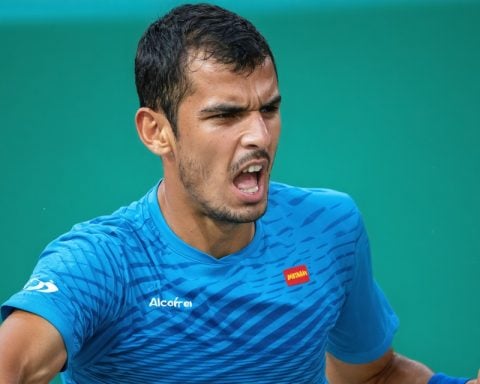- The tennis world is questioning the integrity of its anti-doping policies, with accusations of favoritism in handling cases.
- Novak Djokovic and other players have voiced concerns over perceived bias, particularly in cases like Jannik Sinner’s.
- Jannik Sinner faced controversy for testing positive for Clostebol; his three-month ban is seen as conveniently timed to minimize disruption to his career.
- Critics argue that these disciplinary measures seem designed to protect top players, contrasting with harsher penalties for others, such as Simona Halep’s four-year ban.
- The situation highlights the need for transparent and equitable anti-doping measures to maintain tennis’s integrity and ensure a level playing field.
The tennis world finds itself at a crossroads, questioning the integrity and fairness of its anti-doping policies. Novak Djokovic, one of the sport’s luminaries, has raised alarms over perceived favoritism in the handling of doping cases—an accusation that resonates across locker rooms and tennis courts alike.
Jannik Sinner, reigning world number one, stands at the center of this storm. Recent months saw him embroiled in controversy after testing positive for Clostebol in March of last year, a revelation that sent shockwaves through the tennis community. Despite being initially cleared of wrongdoing by the International Tennis Integrity Agency, the World Anti-Doping Agency’s persistent appeal led to his eventual suspension.
Critics argue that the timing of Sinner’s three-month ban, which conveniently ends just before the Rome Masters and the much-anticipated French Open, is no mere coincidence. Some suggest that it’s crafted to minimize disruption to Sinner’s career, sparking debate over whether the playing field remains level for all competitors.
Djokovic isn’t alone in his scrutiny. British player Liam Broady echoed sentiments that the disciplinary measures seemed tailor-made to shield top players from substantial impact. The voices of skepticism grow with Simona Halep’s contrasting experience—a four-year ban starkly highlighting disparities in how different athletes face penalties.
This chasm in treatment prompts a key takeaway: the necessity for transparent and equitable anti-doping measures. Tennis, rich in its history and talent, risks tarnishing its image unless it confronts these inconsistencies head-on. For a sport where legends are born on clay and grass, integrity must hold as firm as the resolve of the athletes who play it.
Is Tennis Playing Fair? Uncovering the Truth Behind Anti-Doping Controversies
How-To Steps & Life Hacks: Navigating Anti-Doping Regulations in Tennis
1. Understand the Regulations: Familiarize yourself with the World Anti-Doping Agency (WADA) Code, which outlines prohibited substances and procedures.
2. Regularly Check Updates: Regulations can quickly change, so it’s crucial for athletes to stay informed by regularly checking updates from the International Tennis Federation (ITF) and WADA.
3. Maintain a Clean Diet: Athletes should consult with sports nutritionists to ensure their diet and supplements do not contain banned substances.
4. Keep Records: Maintain detailed records of all medications and supplements taken, including prescriptions, which can serve as evidence in case of doping allegations.
5. Seek Professional Advice: Before taking any new supplements or medications, consult with a medical professional who understands anti-doping rules.
Real-World Use Cases: Impact of Anti-Doping Policies on Careers
The suspension of prominent players like Jannik Sinner serves as a cautionary tale for upcoming athletes. The controversy highlights the necessity for clear evidence and fair handling to preserve one’s career and reputation. Players and coaches must ensure compliance to avoid the career disruptions similar to those faced by Sinner and Simona Halep.
Market Forecasts & Industry Trends: Evolution of Anti-Doping Measures
The anti-doping industry’s market is set to grow, with the incorporation of more sophisticated testing methods and technology. According to a Grand View Research report, the global sports medicine market size was valued at USD 5.9 billion in 2020 and is anticipated to expand as awareness surrounding fair play grows.
Reviews & Comparisons: Anti-Doping Policies in Different Sports
Unlike tennis, sports such as athletics and cycling have seen more stringent policy enforcement and severe penalties, often leading to suspensions lasting years. This contrast in approaches raises questions about tennis’ leniency and consistency in handling doping violations.
Controversies & Limitations: Are All Players Treated Equally?
Criticism surrounds the perceived preferential treatment of top-ranked players. Novak Djokovic’s and Liam Broady’s comments reflect a broader discontent within the community, questioning whether penalties are truly impartial or if they favor prominent figures to sustain the sport’s viewership and revenue dynamics.
Features, Specs & Pricing: The Cost of Testing
Comprehensive doping tests can be expensive, often ranging from USD 5 to USD 600 per athlete, depending on the sophistication and depth of the analysis. This aspect underlines the financial commitment required by sporting bodies to uphold integrity and transparency.
Security & Sustainability: Technological Advances in Doping Tests
Recent advancements include the use of AI and machine learning to enhance the detection process. Biomarker discovery and improved analytical methods ensure more accurate results, reducing false positives and enhancing the sport’s authenticity.
Insights & Predictions: The Future of Tennis
Tennis must integrate technology and transparency to safeguard its reputation. Future trends suggest an emphasis on educating athletes about doping rules from an early age, ensuring they remain compliant throughout their careers.
Tutorials & Compatibility: Preparing for Anti-Doping Tests
Athletes can prepare for doping tests by understanding the classification of substances and ensuring they manage their intake meticulously. Training programs can help embedded these practices into daily routines.
Pros & Cons Overview
Pros:
– Promotes fair competition and protects athletes’ health.
– Enhances the credibility and integrity of the sport.
Cons:
– Complex regulations can be difficult for athletes to navigate.
– Perceived bias in enforcement may affect trust in governing bodies.
Actionable Recommendations
– Stay Informed: Regularly review updates from WADA and relevant sport governing bodies.
– Documentation: Maintain detailed logs of all supplements and medications.
– Consult Professionals: Work regularly with sports dietitians and doctors well-versed in anti-doping regulations.
For further insights on sports integrity and regulations, please visit the International Tennis Federation and World Anti-Doping Agency websites.
By adhering to these recommendations, athletes can shield themselves from inadvertent doping violations and ensure their careers remain untarnished by controversy.



















